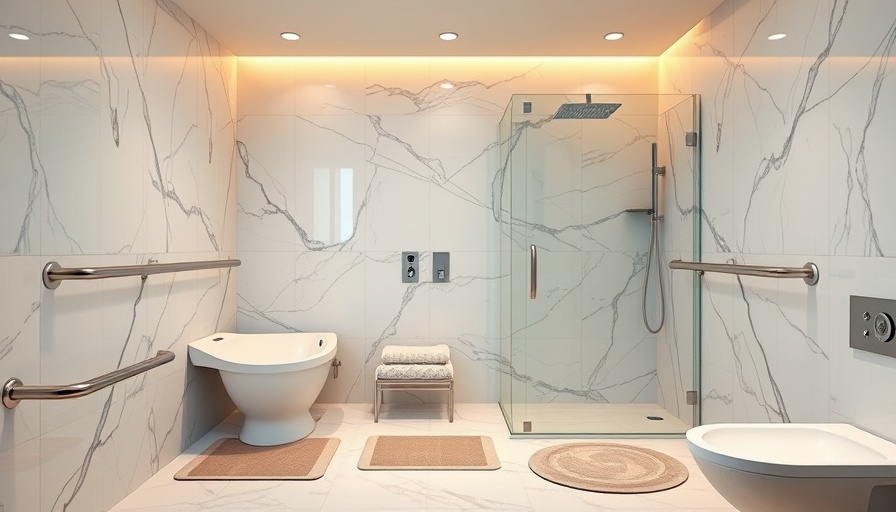
Understanding Bathroom Safety: The Key to Independence
For seniors, the bathroom can be one of the more perilous places within the home. With the right knowledge, however, simple modifications can transform this essential space into a haven of safety and comfort. The importance of bathroom safety cannot be overstated; according to the Centers for Disease Control and Prevention, one in four Americans aged 65 and older experience falls each year, emphasizing the need for proactive measures.
Critical Risks that Seniors Face in the Bathroom
Understanding the risks associated with bathroom use is essential for safeguarding seniors. Wet surfaces from showers or sinks, unevenly placed rugs, and limited space can all contribute to hazards. As families assess their loved one's living conditions, considering aspects such as lighting (which is often inadequate), flooring, and proper support systems can make a significant difference. By taking a proactive stance, families can implement preventive measures that not only reduce risks but also enhance their loved one's quality of life.
Implementing Safety with Grab Bars
Installing grab bars is one of the most effective modifications for improving bathroom safety. These sturdy supports offer critical assistance while maneuvering in sensitive areas like the tub or toilet. When installing grab bars, it’s vital to choose the right size and style—grabbing bars must be at least 1.25 inches in diameter for a secure grip. Not only should they be placed strategically to maximize use, but they must also be anchored in wall studs to ensure stability. Adjustable or folding options can also be ideal for smaller bathrooms, providing safety without taking up excessive space.
Choosing the Right Flooring: A Non-slip Solution
The type of flooring in the bathroom plays a vital role in preventing falls. Traditional materials can become slick when wet, making the selection of non-slip surfaces extremely important. Options such as textured vinyl or rubber provide a safe environment while being uncomplicated to maintain. Homeowners should also consider area rugs or mats; these should be non-slip and adequately secured to avoid adding to the risk. Regular cleaning and immediate addressing of spills can significantly enhance safety.
Lighting the Way for Safety
A well-lit bathroom ensures that seniors can better navigate their surroundings, reducing the chances of accidents. Consider upgrading to brighter, energy-efficient lighting that illuminates all corners of the room without harsh glare. Installing nightlights in dark areas, such as near the bathtub and toilet, can also provide reassurance during nighttime trips to the bathroom.
Practical Insights into Creating a Senior-Friendly Bathroom
Beyond installing grab bars and choosing non-slip flooring, there are additional steps that can transform a bathroom into a safe haven. Consider adding a shower chair or bench, which can provide extra support for seniors showering. Buying a hand-held showerhead is also beneficial; it allows for more control over water direction, thereby enhancing the bathing experience.
Real-Life Success Stories in Bathroom Safety
Many seniors have shared positive experiences after making modifications in their bathrooms. One woman from Toms River expressed confidence after installing grab bars and switching to non-slip flooring; she noted that she could once again enjoy long warm baths without fear. Stories like hers encourage families to take similar steps for their loved ones.
Final Thoughts on Independent Living
Making the bathroom safer for seniors is not merely about reducing risks; it is about empowering them to retain their independence. By carefully assessing the bathroom environment and implementing meaningful changes, family members can significantly affect their loved ones' overall quality of life. A bath that feels safe and comforting enables seniors to maintain their routines, bathe confidently, and preserve their dignity.
As we navigate the aging process, understanding and addressing the challenges of bathroom safety will make all the difference. Engaging in the conversation with elderly loved ones about bathroom modifications can lay the groundwork for a safer, more independent living experience. Whether you are a caregiver or a family member, it is essential that you take action today to implement these changes.
 Add Row
Add Row  Add
Add 




Write A Comment